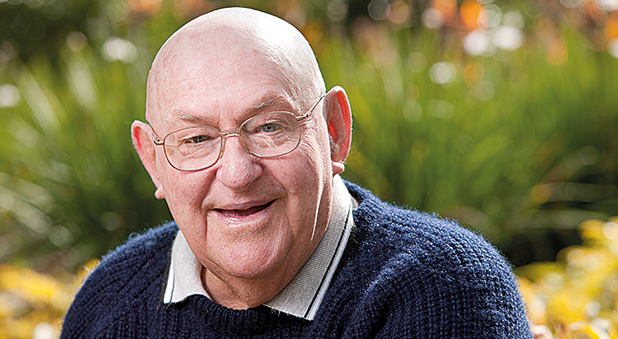This book is well titled. It is not a biography or memoir; it is a “collection’. Colourful characters like John Charles Chapman always collect anecdotes, and often engender some themselves.
Chapman skilfully made his stories work for him to amuse people, get past their prejudices and win them to Christ. In this book David Mansfield has garnered a large and revealing range of such things.
Chappo collected friends, and a large part of the “collection” is things they said about him. One friend observed that he had the gift of making you feel unique, so you felt that you were his best friend. Although Chappo remained single he had a high view of marriage. There is a big section on him as godfather and the book contains his excellent sermon on singleness.
Glenn Lyons asks what it was that made Chappo such an effective evangelist and concludes that it was a “normality” that made him so endearingly “ordinary”. This common touch gave him the ability to identify with all sorts of people and approach them with refreshingly plain language. His friend Dick Lucas – with a certain amount of English reserve – was amazed at John’s ability to initiate conversation with people even on public transport.
Chappo will, of course, be mostly remembered as an evangelistic preacher. David Seccombe says, “I regard John as one of the finest evangelists in the world – very different from Billy Graham or the American evangelists – very much an Australian, warm humorous, down to earth and crystal clear”.
A dominating aspect of his evangelistic messages was that they were expository. When John Stott came to a CMS Summer School and gave a fine model of this style of biblical preaching Chappo and others saw it as the way forward. Chappo thereafter used it in his evangelistic preaching and, as Philip Jensen said, “Chappo was an expositor in an Australian way”.
As a gifted preacher Chappo also became a teacher of preachers. His mantra on length of sermons, shortness of introduction and failure to disclose what a sermon asks of the audience was legendary; many a budding preacher had the “blowtorch applied to the belly” when overstepping these markers. Moore College and Sydney Missionary and Bible College both had the good sense to employ Chappo as a homiletics teacher.
Some people would first have met Chapman in his books. What is a Christian reached a circulation of 250,000 within 10 years and has since been translated into a number of languages. In the ’80s more books were to follow such as Know and Tell the Gospel and A Fresh Start. Eventually Matthias Media took over the publication of Chappo’s future books, including some written in his last years.
Collection no. 111 in the book is titled “Chappo and the World”, and takes us from his early years to wider and wider opportunities such as England and South Africa. Many may have wondered whether Chappo’s home-grown, dinkum Aussie approach to proclaiming the gospel was exportable. How would it go in more reserved circles unused to the sometimes riotous humour and hilarious anecdotes? His friendship with Dick Lucas of St Helen’s, Bishopsgate in London was eventually to put this question to the test almost annually.
“John’s visits over here became legendary,” Lucas says.
This book was a challenge to the reviewer. The scope is so large, the quotes so amusing, touching, and revealing that the reviewer could only pick and choose. It is left to the fortunate reader to have the time to give the book its proper treatment. David Mansfield is to be congratulated for opening up highlights from the life of a very remarkable man.


















